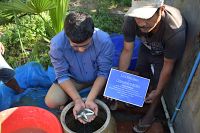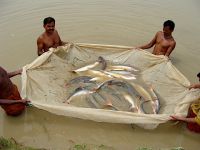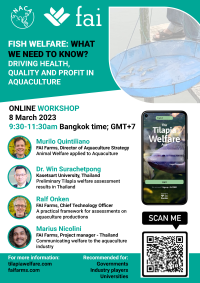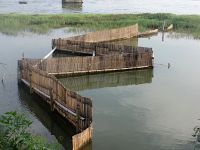Cirrhinus reba or ‘reba carp’ is a commercially important indigenous minor carp species distributed over south Asia. It is highly popular among consumers and fetches a better price than the major carps. A herbivorous species, C. reba can easily digest plant protein sources. It has been identified as a priority species for aquaculture diversification in India and has great scope for incorporation in carp culture and polyculture systems.
The yellow tail catfish Pangasius pangasius is found throughout the rivers of the Indian subcontinent. A large, omnivorous, and highly fecund species, it is suitable for aquaculture. Initial work on captive breeding of yellow tail catfish was carried out by scientists from the ICAR-Central Institute of Freshwater Aquaculture in the early 1990's. This article provides updated information on captive reproduction, larval rearing and nusery techniques for this species, which will be of use for farmers and entrepreneurs interested in producing it.
FAI and NACA will convene a webinar on fish welfare issues on 8 March from 9:30-11:30 am Bangkok time (GMT+7). The webinar will address the relationship between welfare, health, quality and profit in aquaculture production. The programme will feature talks on:
- Animal welfare applied to aquaculture.
- Preliminary tilapia welfare assessment results in Thailand.
- A practical framework for assessments on aquaculture productions.
- Communicating welfare to the aquaculture industry.
Participation is free but registration is required, please download the attached flyer for details.
Since the late 1960s, brackishwater rural aquaculture in West Bengal grew and improved at a fast rate, from an extensive method of farming to a modified-extensive method. The indigenous bheri fishery is a well-known extensive aquaculture system throughout all coastal states of India. Bheri fishery isn’t a capital-intensive practice. This article describes farming practices in bheri systems in West Bengal, India, including their integration with mangrove aquaculture. A second part of this article will be published in the next issue.
NACA is set to embark on a journey with FAI Farms to educate, train and support fish and shrimp farmers on animal welfare. NACA and FAI are currently working on a program for the coming year to educate and train farmers on fish and shrimp welfare through a series of workshops and webinars. Furthermore, the series of online training courses “Welfare in tilapia production guideline” will be freely available to the NACA network to disseminate knowledge on the welfare of aquatic animals. In addition to trainings, workshops and online courses, FAI has developed a Tilapia welfare application that will put welfare directly into the hands of the farmer.



